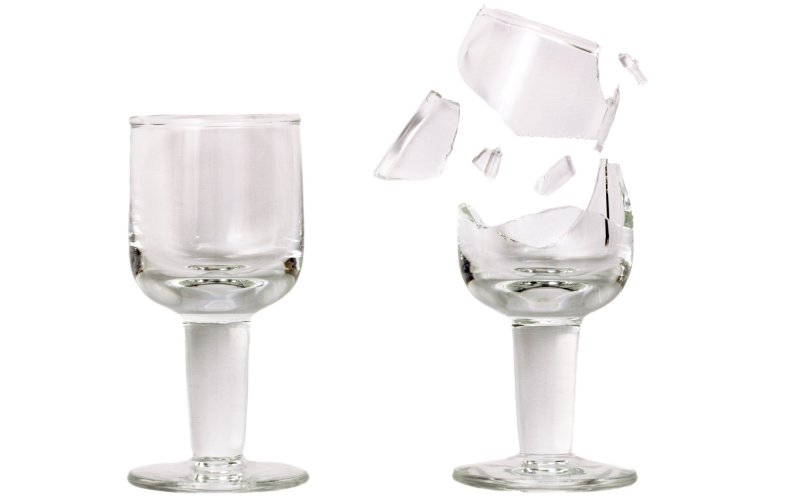Everything can be broken, the only question is how difficult it will be. It will be simple in theory with a glass but I personally wouldn’t trust the implementation, especially due to the absence of a musical ear?
When we tap the glass, we can hear a sound. The pitch (frequency) of this sound depends on the material and shape of the glass. By tapping, we make the glass vibrate, this vibration is transferred due to impacts of the glass to air molecules and spreads through the air to our ear. There, the ear drum vibrates and through other parts of the ear this impulse spreads to our brain and we evaluate this impulse as sound. If we tap the glass a lot, it will break. Couldn’t the above procedure (vibration of the glass -> vibration of air molecules -> sound) be done in reverse? That is, make the air molecules vibrate with some sound and this vibration will spread through the air to the glass and shake it? It would definitely work. So if we have a very intense sound (the air molecules will vibrate a lot, we can tell by the sound being very loud), then we should break the glass using the sound. But it won’t be that easy — any sound is enough to make the glass vibrate but to break it, we’ll need a sound that vibrates the glass as much as possible. It’s the same as on a swing — the swing will always swing somehow but if we want it to swing as much as possible, we have to move with a certain frequency. So, just like with a swing, we have to find a sound frequency that makes the glass vibrate as much as possible. We call this frequency the resonant frequency (because both the required vibration of the glass and the swing with the largest deflection are examples of resonance). How to find this frequency? Either experimentally (which is quite impractical) or we will simply find out the frequency at which the glass vibrates after we tap it and we will produce the same frequency with our own vocal cords. And that’s where it can be tricky for people like me — we have to hit the glass’s frequency exactly (if we make the sound even a little bit higher/lower, it won’t resonate and break the glass). That’s why people with a good musical ear have a better chance — they just have to listen to the tone the glass makes and then produce the same tone with their own vocal cords. You can get around it by tapping the glass, recording the resulting sound and then playing it in a loop. So people like me have a chance too.
It is good to realize that whether we break a glass does not depend at all on the intensity (volume) of the sound but only on whether we hit the resonant frequency of the glass exactly.
Finally, I will add a minor interesting fact — the microwave oven also works on the same principle (i.e. resonance).
Want to ask something?
Send us an e-mail with the subject “Physics mysteries” to the address:
We can't wait to tackle your interesting questions!





